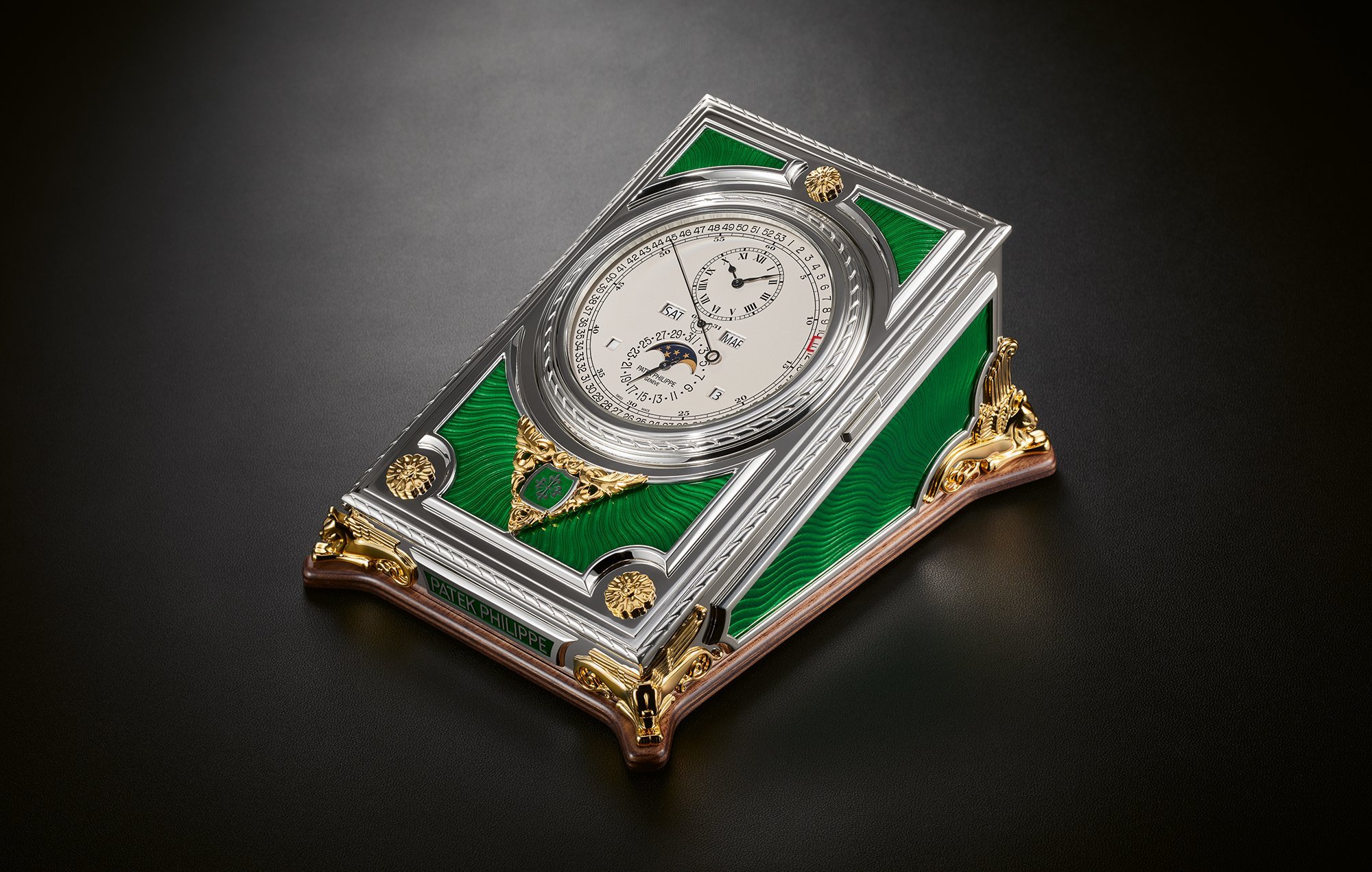hile the golden age of such prestigious desk clocks – signs of erudition and influence – may belong to the past, a century later, and true to its “tradition of innovation”, Patek Philippe is returning to these masterpieces of engineering, with the benefit of the advances made by twenty-first-century horology.
The rectangular 86-135 PEND S IRM Q SE movement is the product of a full seven years of development. Nine patent applications have been filed for innovations and optimisations, essentially aimed at strengthening long-term reliability, reducing energy consumption, enhancing ease of use and securing the functions against mishandling.
This manual-winding calibre provides 31 days of power reserve, courtesy of three series-connected barrels, and measures time with a remarkable accuracy of -1/+1 second per day. So as to guarantee such a minimum variation in rate, at the heart of the movement, a “true precision regulator” with a patented constant-force mechanism maintains the stable amplitude of the balance from the first day of the power reserve to the last, over a full month.

Revisited indications
Such accuracy is reflected in the indication of the seconds by a jumping (or deadbeat) seconds hand which, rather than sweep the dial, makes one visible jump per second, in the style of a regulator. This is not the only departure from the original “Packard” clock. A weekly calendar shows the current week’s number on a scale at the periphery of the dial while the date is given on a subsidiary dial at 6 o’clock, flanked by apertures for the day/night indication and for the leap-year cycle of the perpetual calendar. Hours and minutes retain their traditional position in a small eccentric subsidiary dial at 12 o’clock. Moon phases appear in an aperture at 6 o’clock, with day and month apertures at 9 and 3 o’clock respectively.
A new take on a classical design
The overall shape of this desk clock is that of the “Packard”, though slightly enlarged. Its exterior looks directly to the historical 1923 model. Panels of green Grand Feu flinqué enamel over a swirling guilloché pattern adorn the 925 silver cabinet. Another panel, decorated with an engraved “cord” motif, applied decorative elements in silver gilt and rosettes, is framed by four winged lions. Lifting the hinged cover reveals the mechanical console, set in American walnut veneer. With a press of the finger, five pushpiece correctors, identified by a letter or a symbol, enable easy adjustment of the perpetual calendar’s week, day, moon phases, month and date indications, through a complex system of intermediate wheels. Also found in the casing are an ejection system which houses the winding and setting key; two openings for inserting the key in the time-setting and winding squares, and another opening that gives access to the stop-seconds square, so that the time can be adjusted to the nearest second. In the centre of the dial, a discreet power-reserve indicator acts as a reminder of when the movement needs winding. Which is every 31 days.









